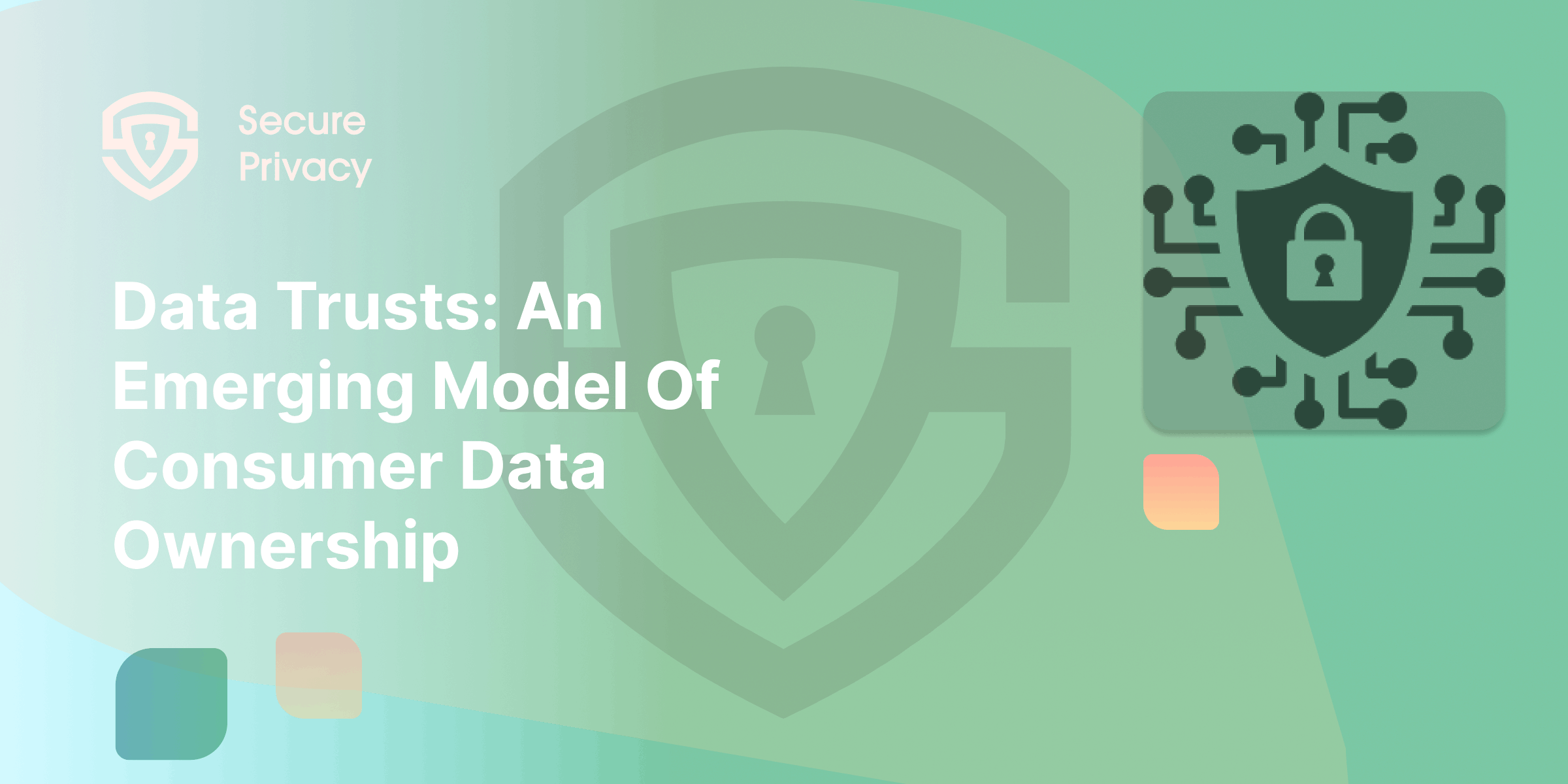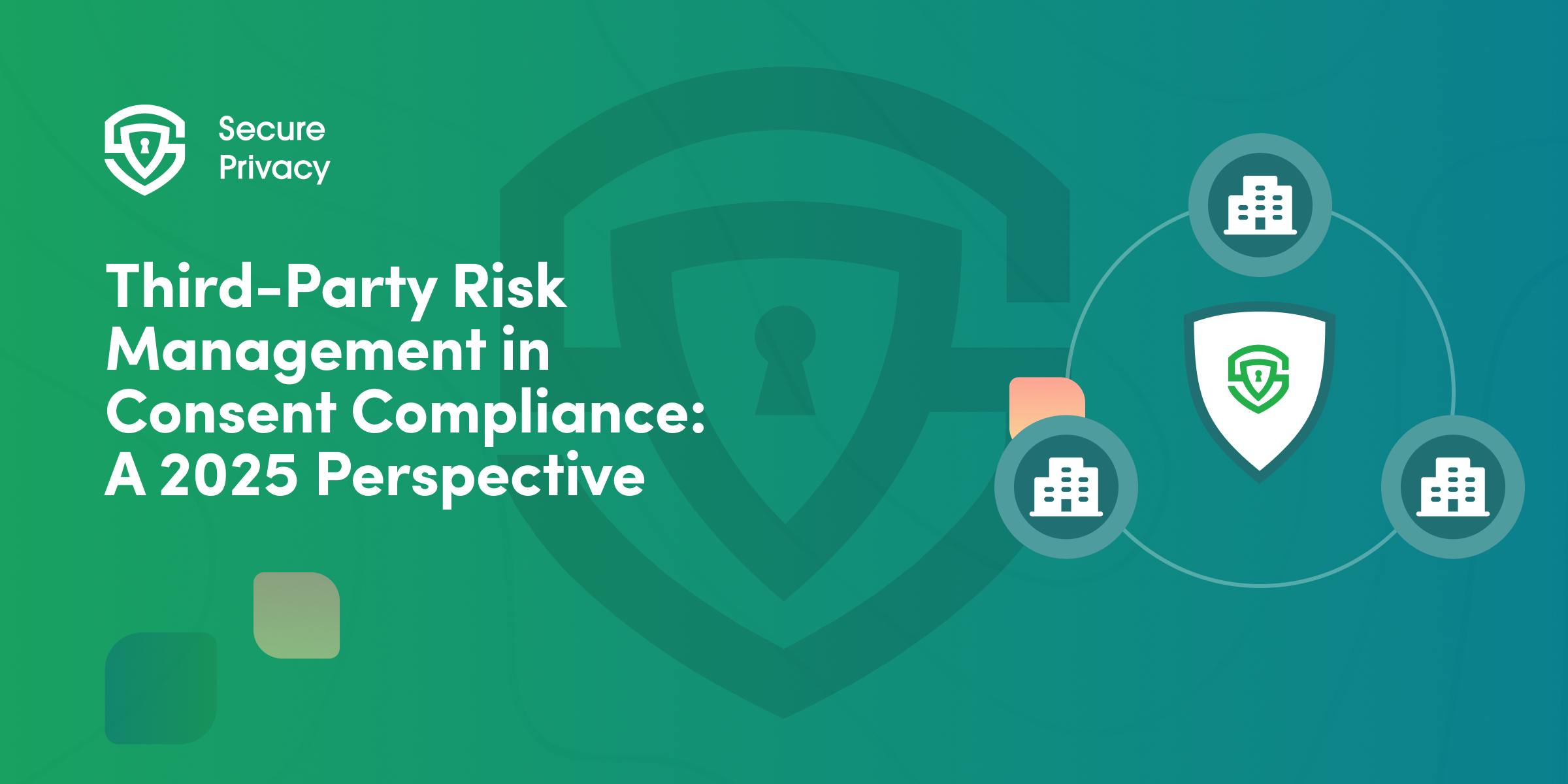Third-Party Risk Management in Consent Compliance: A 2025 Perspective
Is your organization effectively managing the risks associated with third-party consent practices? With the growing complexity of vendor relationships and stricter regulatory requirements, a comprehensive approach to TPRM has never been more crucial for maintaining both compliance and consumer trust.
Third-Party Risk Management (TPRM) has become a critical component of organizational compliance strategies in 2025. The evolving regulatory environment and increasing reliance on third-party vendors have made it essential for businesses to implement robust TPRM frameworks that specifically address consent compliance.
Is your organization effectively managing the risks associated with third-party consent practices? With the growing complexity of vendor relationships and stricter regulatory requirements, a comprehensive approach to TPRM has never been more crucial for maintaining both compliance and consumer trust.
Key Components of TPRM for Consent Compliance in 2025
A robust third-party risk management framework for consent compliance must address several critical elements. These components work together to create a comprehensive approach that protects your organization while enabling efficient vendor relationships.
Risk Assessment and Categorization
Before integrating any third-party vendor into your operations, thorough due diligence is essential—particularly for vendors handling sensitive consumer data. This initial assessment establishes the foundation for your ongoing risk management strategy.
Your risk assessment process should include:
- Assigning specific risk levels based on each vendor's potential impact on your consent management practices. This helps prioritize monitoring efforts and resource allocation.
- Implementing structured risk-scoring methodologies to evaluate third-party risks related to data collection and processing. These scores should consider factors like access levels, data volume, and processing purposes.
Many organizations find success with tiered assessment models that apply progressively more rigorous evaluation for vendors handling more sensitive information or with greater access to consent systems.
Contractual Risk Governance
Clear contractual agreements with third-party vendors provide the legal framework for maintaining consent compliance. These documents establish expectations, requirements, and accountability for all parties involved.
Effective contracts should:
- Include specific clauses detailing consent collection, storage, and management requirements. These provisions should align with your internal standards and relevant regulations.
- Define liability and accountability for consent-related breaches or non-compliance incidents. This clarity helps prevent disputes and ensures prompt remediation if issues arise.
- Establish regular reporting requirements that provide visibility into vendor consent practices. These reports create an ongoing record of compliance activities and help identify potential issues early.
Continuous Monitoring and Review
The dynamic nature of today's consent landscape makes point-in-time assessments insufficient. Continuous monitoring has become essential for maintaining effective oversight of third-party consent practices.
Your monitoring program should include:
- Periodic audits to validate third-party compliance with consent management policies. These reviews confirm that vendors maintain compliance between formal assessments.
- Automated third-party risk monitoring tools that detect anomalies or compliance deviations in real-time. These systems provide immediate alerts when unusual patterns emerge.
- Regular reassessment of vendor risk profiles as regulations evolve or business relationships change. This ensures your risk management approach remains aligned with current realities.
Regulatory Considerations for TPRM in Consent Compliance
Global regulations have established varying requirements for consent management, creating a complex compliance landscape for organizations with international operations. Your TPRM framework must account for these diverse standards to ensure comprehensive compliance.
Aligning with Global Standards
To ensure adherence to global standards, your business must align TPRM frameworks with key regulations affecting your operations:
- GDPR enforcement requires strict third-party data processing controls for EU citizens' data. This includes detailed processor agreements and ongoing verification of compliance.
- CCPA/CPRA implementation demands granular controls for California residents' personal information, with specific provisions for service providers and contractors.
- Industry-specific regulations add another layer of complexity, with sectors like healthcare (HIPAA) and finance facing additional consent requirements that must be reflected in third-party oversight.
The most effective approach integrates these various requirements into a unified framework that addresses the strictest standards applicable to your business. This comprehensive strategy reduces duplication while ensuring compliance across all relevant jurisdictions.
Best Practices for TPRM in Consent Management
Implementing effective third-party risk management for consent compliance requires strategic approaches that balance security with operational efficiency. These best practices help organizations navigate this complex landscape.
Implement a Consent Management Platform (CMP)
A robust Consent Management Platform serves as the technical foundation for automating compliance across your third-party ecosystem. This centralized system provides visibility, control, and documentation essential for effective risk management.
Your CMP implementation should:
- Support cookie banners and consent tracking for all integrated third-party services, ensuring consistent user experiences across touchpoints.
- Maintain accurate records of consent obtained through third-party interactions, creating an audit trail that demonstrates compliance.
- Integrate with your vendor management systems to provide a unified view of third-party consent activities and associated risks.
Provide Granular Controls
Modern consent management requires moving beyond all-or-nothing approaches to offer users specific, purpose-driven choices. This granularity builds trust while ensuring regulatory compliance.
Effective granular controls include:
- Category-specific consent options for different types of third-party cookies or data collection activities. This allows users to permit necessary functionality while limiting optional data sharing.
- Clear, straightforward interfaces that avoid dark patterns or manipulation in third-party consent mechanisms. Transparency builds trust and reduces regulatory risk.
- User-friendly preference centers that make it easy for consumers to understand and manage their consent choices across your third-party ecosystem.
Enable Easy Opt-Out Mechanisms
Ensuring that consumers can easily revoke consent for third-party data sharing has become both a regulatory requirement and a consumer expectation. Your systems should make this process straightforward and effective.
Implement these key features:
- A clear "Do not sell or share my personal information" option prominently displayed in user interfaces and privacy centers. This visibility demonstrates your commitment to consumer choice.
- Simple mechanisms for users to change their preferences across all integrated third-party services. These tools should work consistently, regardless of which vendor originally collected the consent.
- Automated processes that quickly propagate opt-out decisions throughout your vendor ecosystem. This ensures third parties promptly cease prohibited data processing activities.
Organizations that excel in this area typically implement dashboards that give consumers a comprehensive view of their consent status across all connected vendors and provide one-click options to modify these preferences.
Conduct Regular Third-Party Security Audits
The security practices of your vendors directly impact your consent compliance posture. Regular audits verify that these partners maintain appropriate controls and safeguards.
Your audit program should assess:
- Adherence to relevant cybersecurity and data protection standards, including NIST cybersecurity controls and ISO 27001 risk management protocols. These frameworks provide a structured approach to evaluating security practices.
- SOC 2 compliance verification to ensure vendors maintain strong security practices specifically focused on confidentiality, privacy, and processing integrity. These independent assessments provide valuable third-party validation.
- Implementation of data minimization principles that limit collection and processing to only what's necessary for authorized purposes. This reduces both security risks and compliance exposure.
Emerging Trends in TPRM for Consent Compliance
The landscape of third-party risk management for consent compliance continues to evolve rapidly. Several emerging trends are reshaping how organizations approach this critical function.
AI-Powered Consent Orchestration
Artificial intelligence is transforming consent management by enabling more sophisticated, responsive approaches to complex third-party ecosystems.
Leading organizations are implementing:
- AI copilots for real-time consent management guidance, helping teams navigate complex regulatory requirements and vendor relationships with greater confidence.
- Machine learning systems that identify potential consent compliance risks in third-party interactions before they escalate into compliance issues. These predictive capabilities enable proactive risk management.
- Natural language processing tools that automatically analyze vendor contracts and privacy policies for compliance gaps or contradictions. This automation improves efficiency while reducing human error.
Quantum-Safe Consent Chains
As quantum computing advances threaten traditional encryption, forward-thinking organizations are preparing their consent management systems for this new reality.
Key preparations include:
- Working with third-party vendors to upgrade legacy systems to quantum-safe encryption standards. This proactive approach ensures consent records remain protected against future threats.
- Implementing cryptographic agility that allows consent management systems to quickly adapt to new encryption methods as they become necessary. This flexibility creates long-term resilience.
- Conducting quantum risk assessments for consent record storage and transmission, identifying vulnerabilities before they can be exploited.
Ethical AI Certification for Third Parties
The growing use of AI in consent management has created new considerations for vendor evaluation and selection.
Advanced organizations now:
- Look for certifications like the "FairData Seal" when evaluating AI-powered consent management tools. These validations verify that algorithms meet ethical standards for fairness and transparency.
- Ensure third-party AI systems are audited for bias and transparency in consent processes. These reviews prevent unintentional discrimination or manipulation in automated consent systems.
- Request detailed documentation of AI decision-making processes related to consent management. This transparency supports both compliance efforts and consumer trust.
Building a Future-Ready TPRM Consent Framework
As regulatory requirements continue to evolve and technologies advance, organizations must adopt flexible, forward-looking approaches to third-party risk management in consent compliance.
The most successful strategies combine:
- Integrated technology platforms that unify consent management across vendors and touchpoints. These systems create a single source of truth for consent status while streamlining management processes.
- Clear governance structures that define roles, responsibilities, and accountability for third-party consent compliance. This clarity ensures effective oversight and prompt remediation of issues.
- Ongoing training and awareness programs that keep teams updated on evolving requirements and best practices. This human element remains essential even as automation increases.
By implementing comprehensive TPRM for consent compliance, your organization can transform a potential liability into a strategic advantage. Effective management of these risks not only prevents regulatory penalties but builds consumer trust that drives long-term business success.
Organizations that excel in this area recognize that third-party risk management for consent isn't merely a compliance function—it's a fundamental component of responsible data stewardship and customer relationship management in today's privacy-conscious world.
Get Started For Free with the
#1 Cookie Consent Platform.
No credit card required

Data Trusts: An Emergent Consumer Data Ownership Model
Is your organization prepared for this fundamental shift in data governance? With trust becoming the new currency in digital relationships, understanding and potentially adopting data trust models could determine your competitive position in the years ahead.
- Legal & News

Third-Party Risk Management in Consent Compliance: A 2025 Perspective
Is your organization effectively managing the risks associated with third-party consent practices? With the growing complexity of vendor relationships and stricter regulatory requirements, a comprehensive approach to TPRM has never been more crucial for maintaining both compliance and consumer trust.
- Legal & News

FCC's One-to-One Consent Rule Eliminated: What This Means for Your Marketing Strategy
The marketing landscape has shifted significantly with the elimination of the Federal Communications Commission's One-to-One Consent Rule. Originally set to take effect on January 27, 2025, the rule was struck down by the U.S. Court of Appeals for the 11th Circuit just days before implementation. This last-minute reversal has substantial implications for how businesses collect, share, and utilize consumer contact information. What does this mean for your marketing operations? How should your business respond to maintain both regulatory compliance and consumer trust? This article explores the implications of this ruling and provides actionable guidance for navigating the evolving regulatory landscape.
- Legal & News
- Cookie Consent

